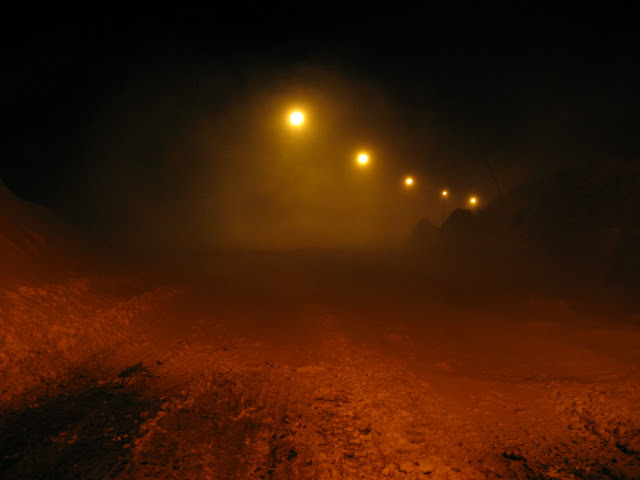It is always interesting to hear the differences in climate and terrain we have. Here the mile poles are mostly 'regular' height, maybe 3 feet or so, with every 5th or so pole extra height, maybe 6 feet. You're obviously getting a lot more than that to warrent 8+' markers.
200 yard visability on the major highways isn't all that unusual here, but driving usually isn't a problem because you can cue off the mile markers. With the rolling or hilly terain we have, even the exposed interstates aren't bad as far as drifts go.
Those mile markers sure help, don't they? Driving without a undisputable visual clue of where the road ends is really spooky. It doesn't have to be a blizzard - a grey, overcast day with fresh snow on the road will be hard enough. Imagine what this would be like if you put 1" of powder on top of that black tarmac:
winter road Minor road in mountain area, good visibility conditions:

Major road at night:

This is a short video stub from inside a snow plow truck at a major route, trying to keep that mountain pass open. You can clearly see the reflector poles flashing by.
mpeg-video snow plog As conditions worsen, the major mountain passes will allow only convoys guided by snow plows in front and at rear - you have to wait for the snow plow, and they will only allow you in the convoy if you have adequate clothing and equipment. No shovel, no rope and no winter clothing and you won't be allowed into the convoy. If it gets worse, convoys are for large trucks only (higher seat position gives a huge gain in visibility in snow drift compared to ordinary cars). Worse than that, the mountain pass is closed. There may also be night closure. I would guess that these routines are pretty similar in the mountain regions of U.S. and Alaska.